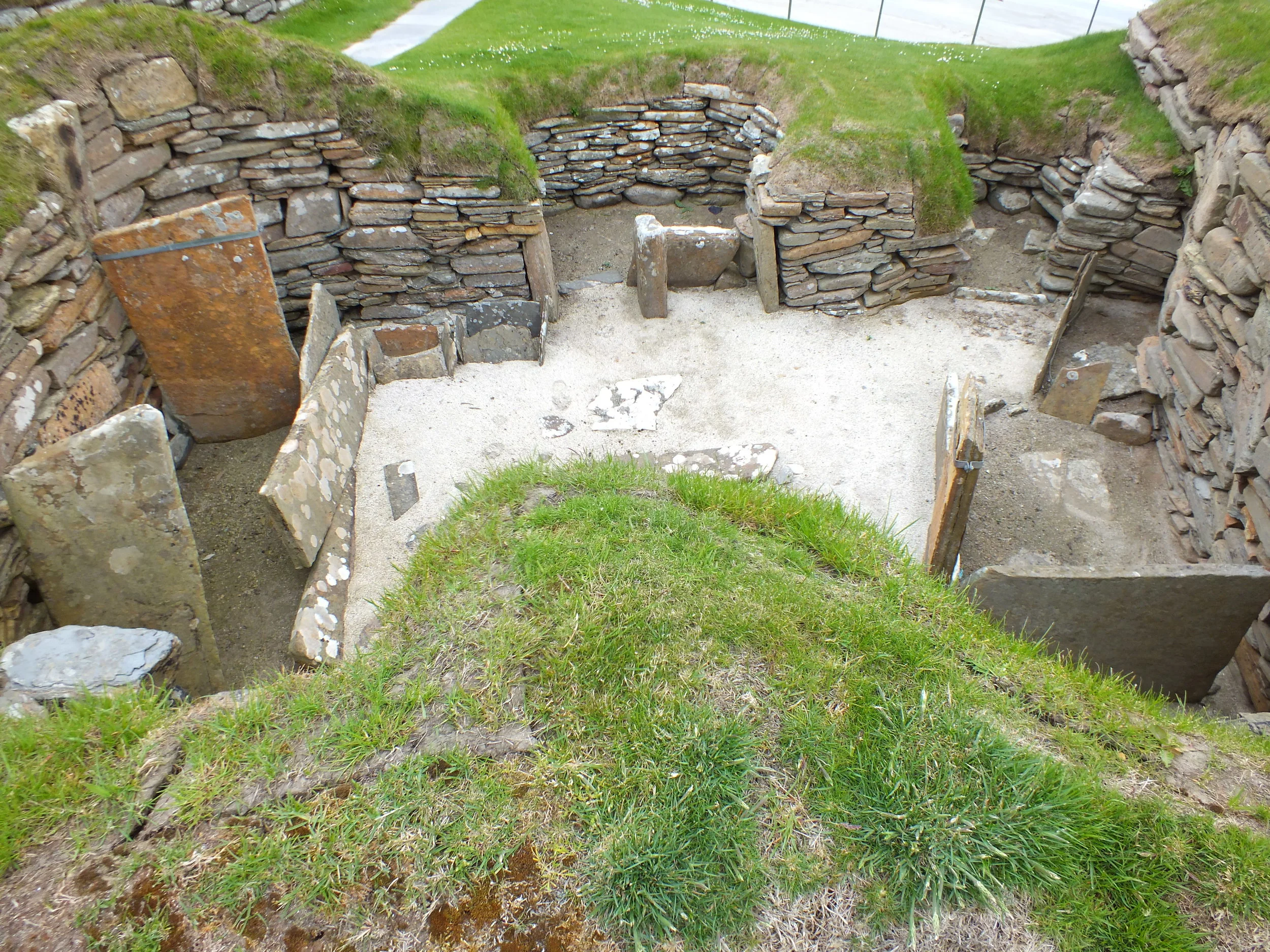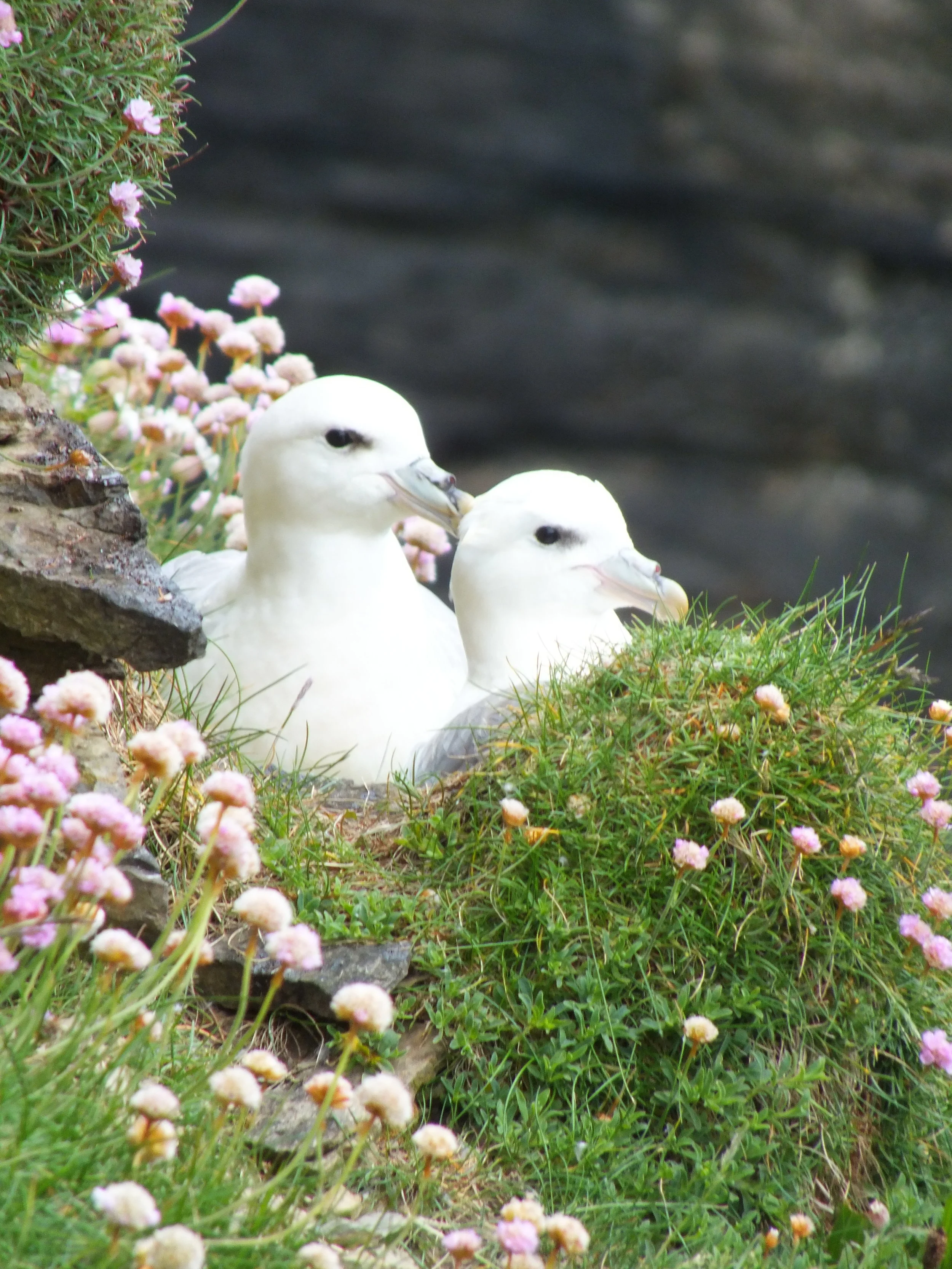Orkney – a place of Neolithic wonder
Any visitor to the south western part of Orkney Mainland will be in awe of the wonderful concentration of Neolithic sites existing here. Such is its significance that it was declared a UNESCO World Heritage site in 1999, not simply due to its physical survival but through extending our understanding of the culture and organisation of the society in that period. Although archaeology may not always provide us with a full understanding of ancient societies, these extensive remains of physical structures, construction techniques, pottery, tools, jewellery, bones and other artefacts provide strong insights into this locale’s Neolithic life.
There is a strong sense of witnessing the full life cycles of these communities. It covers farming and domestic life at Skara Brae, through to the social and ceremonial places at the henges, and finally the burial chamber of Maes Howe. The fact that the local sandstone, which was central to much of the construction, was relatively easy to split into slabs, has no doubt helped preserve these structures.
Skara Brae Neolithic village
It is very easy to glaze over the age of the remains when talking in terms of thousands of years BC. It can lazily become categorised as simply ‘ancient’. In fact, the Neolithic village of Skara Brae predates Stonehenge and the Pyramids by several centuries which makes it feel even more astonishing. On the path to the village remains, they have helpfully displayed markers at various points as a timeline to indicate the relative passage of time. When one realises, in UK terms, that the difference in time between Stonehenge and Skara Brae is similar to that between the Tudors and the present day, it brings a sharper appreciation of the significance of this site.
Skara Brae was discovered in its untouched form in 1850 after a major storm removed all the sand that had been covering it for all the years since its abandonment. It revealed a remarkably preserved cluster of dwellings, demonstrating that the farmers of the day lived in compact, small villages. Furniture, artefacts and other evidence offer an insight into their daily domestic life. Each dwelling is essentially a single room of uniform design with a stone dresser opposite the door. Stone beds are set out on the other sides of the room with a hearth located centrally in the room.
Individual house at Skara Brae
The very recent discovery of the Ness of Brodgar in 2002 is perhaps even more mindblowing and is unlike anything previously discovered or known. The site consists of a complex of stone buildings with the biggest structure appearing to be a ceremonial building. All are built within an enclosing outer stone wall. It is believed to have been in use between 3500-2200 BC, although the known function of the complex is still incomplete. The diversity of archaeological evidence within the complex marks it out to be of the greatest significance, potentially making it the heart of Neolithic Orkney. Much excavation still remains to be done which leaves one wondering what other fascinating finds await discovery.
Standing Stones of Stenness
Nearby, the construction of the Stones of Stenness, a henge with surrounding ditch and earth bank, was begun by 3100 BC. Its construction was intended to have twelve massive standing stones but was never fully completed. Today only three large stones remain. At its centre is a hearth providing evidence that it was a likely place for ceremonies.
Larger still is the Ring of Brodgar. Was this some kind of meeting place or a ceremonial site? Its true purpose still remains a mystery. Interestingly, within the circle no archaeological remains or significant earth disturbances have been found, suggesting perhaps that the inside of the ring was a prohibited place of some kind, or was preserved for a very select few of the community.
Evidence indicates that the Ring was intended to have had 60 standing stones, each 6 degrees apart, but not all were ever put in place. Today there are 27 stones standing. It is unclear how long the project lasted, but it nonetheless illustrates that there was a shared agreement on working collaboratively towards a common goal. A fascinating feature is that each stone and section were tackled in distinctively different ways. The evidence indicates that the stones faced where they were quarried from on Orkney Mainland, suggesting that each ‘community’ or village in the surrounding area took responsibility for building and maintaining their segment. On this basis, the whole project was very much a collaborative effort. Moreover, it has been found that the techniques used in creating the blockholes for the stones varied by depth and in the process used. Some never had stones erected despite the preparation work that was undertaken. Various trades and roles would have been required, whether in a direct or supportive role, from skilled to more labouring ones and also in the division of labour between men and women.
Ring of Brodgar, surrounded by low hills that form part of its natural amphitheatre
This also raises questions about how decisions were made and accepted both within communities and between the individual communities that contributed to the project. It suggests these communities and societies had more complex relationships and forms of organisation than we might casually think, although it is less clear how autocratic or consensual they may have been.
Maes Howe is the most impressive of Orkney’s many chambered cairns. Beneath the mound in the landscape, it consists of a central, large burial chamber and three side chambers. Its entrance is intriguingly aligned with the midwinter sun.
The whole UNESCO site, and certainly the Ring of Brodgar appears to be set within a natural amphitheatre surrounded by relatively low ridges and hills rising from a flat plain. Being able to observe the approach of any threat coming over the hills might possibly have negated the need for any raised embankment surrounding the Ring.
Our visit to this area made us realise that our understanding of these ancient societies is developing all the time and it was clear that there are still enough sites to be excavated that will keep archaeologists busy for long time into the future. Not only that, but the recent development of new surveying techniques employed by archaeologists has identified more new sites including another henge on the floor of Loch of Stenness, whose waters did not exist during Neolithic times. A return visit would certainly be worthwhile.
A quick guide to timelines
Ness of Brodgar, in use between 3500-2200 BC
Skara Brae, inhabited between 3100 – 2500 BC
The Stones of Stenness began 3100 BC
Maes Howe burial chamber, in use around 2700 BC
The Ring of Brodgar, erected between 2500 BC and 2000 BC, last of the great Neolithic monuments built on the Ness.
The oldest Egyptian Pyramids were built 2630 BC
Stonehenge bluestones raised between 2400 and 2200 BC, although surrounding earthworks were started from 3100 BC
Petra, established 400 BC
Great Wall of China, first stone wall built from 221 BC
Machu Picchu, building started 1450–1460 AD








